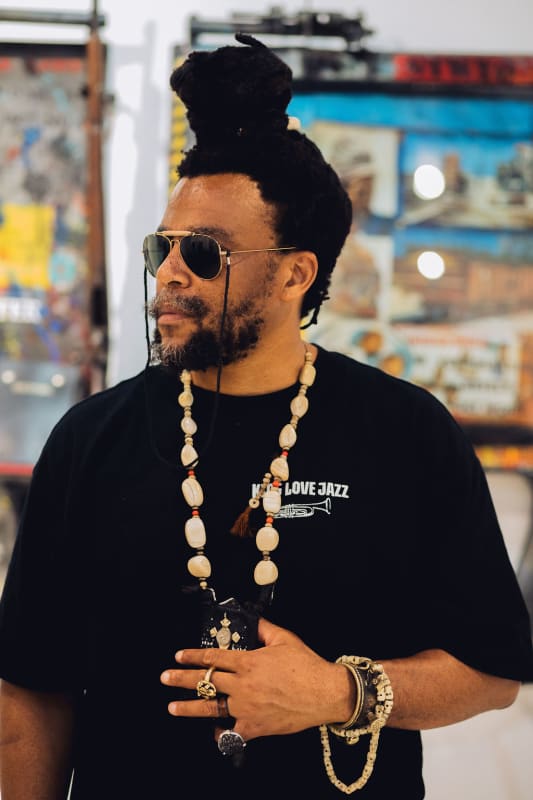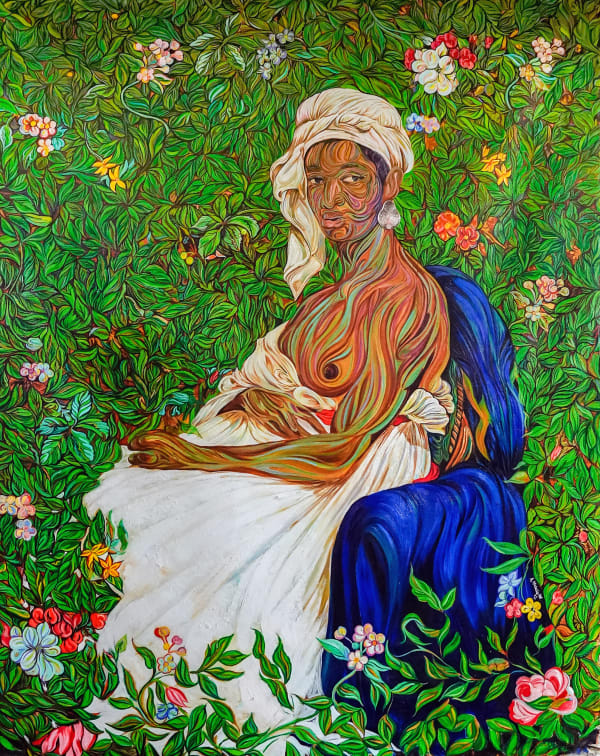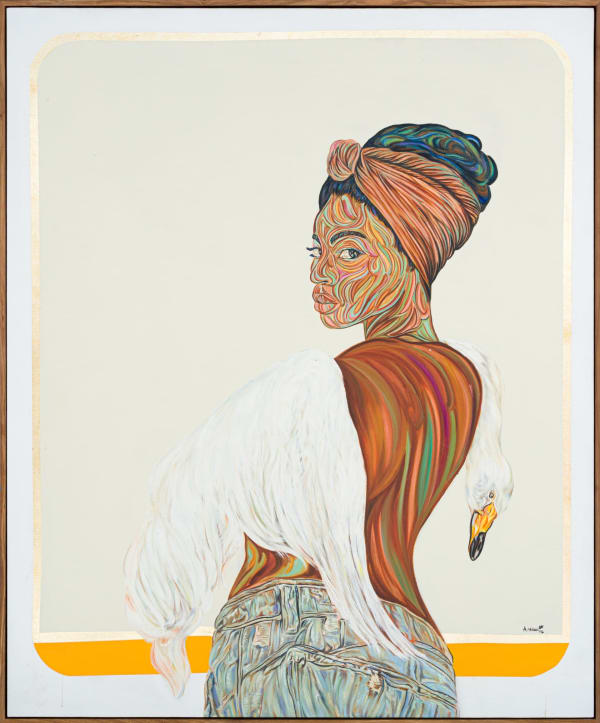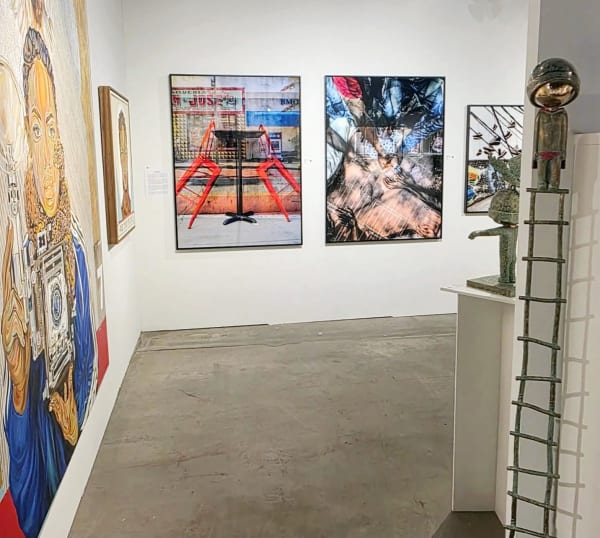Ayanda Mabulu South African , b. 1981
Through his fearless approach, Mabulu continues to provoke thought and conversation around justice, representation, and the role of art in society.
Drawing from personal experience and the socio-political landscape of South Africa, Mabulu uses raw, expressive imagery to expose uncomfortable truths. His paintings frequently depict powerful political figures in explicit or controversial scenarios, sparking national debates about censorship, morality, and the limits of artistic freedom.
Mabulu remains committed to using his art as a form of resistance and social activism. He views painting as a weapon to hold those in power accountable and to speak on behalf of the marginalized. His works have been shown in South Africa and internationally, including at major art fairs and institutions.
Mabulu continues to provoke thought and conversation around justice, representation, and the role of art in society.
Ayanda Mabulu (b. 1981, King William’s Town, South Africa) is one of the country’s most uncompromising and outspoken contemporary painters. Entirely self-taught, Mabulu has developed a distinctive visual language that fuses satire, allegory, and symbolism to interrogate power, corruption, race, gender, and the legacies of colonialism. His works are dense with layered iconography drawn from oral traditions, historical archives, and spiritual references, forming provocative tableaux that confront systems of domination while reclaiming African narratives of resilience and survival.
Mabulu rose to prominence through fearless works that directly addressed South Africa’s political establishment, sparking national and international debate. While widely recognised for these unflinching critiques, his practice extends beyond political portraiture. His large-scale paintings probe themes of land dispossession, capitalism, gender-based violence, and the spiritual cost of erasure. By drawing on ancestral prophecy, oral storytelling, Christian iconography, and cultural motifs, he positions his work as both deeply local and profoundly universal.
Storytelling is at the core of Mabulu’s practice. By juxtaposing figures such as Nongqawuse, the 19th-century Xhosa prophetess vilified during the cattle-killing tragedy, with images of Christ as Salvator Mundi, he destabilises Western narratives that have long defined African history. These interventions challenge cultural erasure, reframing “false prophets” and other marginalised figures as symbols of sacrifice, resistance, and resilience.
Mabulu works primarily in oil paint, often enriched with the use of gold leaf. His brushwork combines expressive mark-making with meticulous detail, building layered surfaces that carry both symbolic and emotional weight. Recurring motifs, such as birds, regalia, painted blankets, and body fragments, serve as metaphors for heritage, spirituality, and power.
His work has been presented in prominent solo and group exhibitions, and featured by leading galleries and art fairs across South Africa and abroad. Mabulu’s work has attracted significant critical attention, appearing in international art press and South African media alike. His paintings are housed in major collections including The New Church Museum (Cape Town) and the Leridon Collection (Paris), as well as numerous private collections worldwide.
Today, Ayanda Mabulu stands as a leading figure in contemporary African art. His practice is unapologetic in its demand for truth and justice, yet equally rooted in acts of healing; affirming the power of storytelling, spirituality, and cultural identity to resist erasure and to reimagine new futures.
-

The Light We Carry
A group exhibition celebrating Pan African voices 5 Nov 2025 - 15 Jan 2026Pan-African art exhibition, Esther Mahlangu, Ayanda Mabula, fine-art, photography, contemporary art, sculpture, paintingsRead more -

The Melrose Gallery’s debut at Atlanta Art Fair 2025
A powerful debut Pan-African presentation highlighting distinctive artistic voices across media & generations 25 Sep - 31 Oct 2025The Melrose Gallery debuts at Atlanta Art FairRead more











